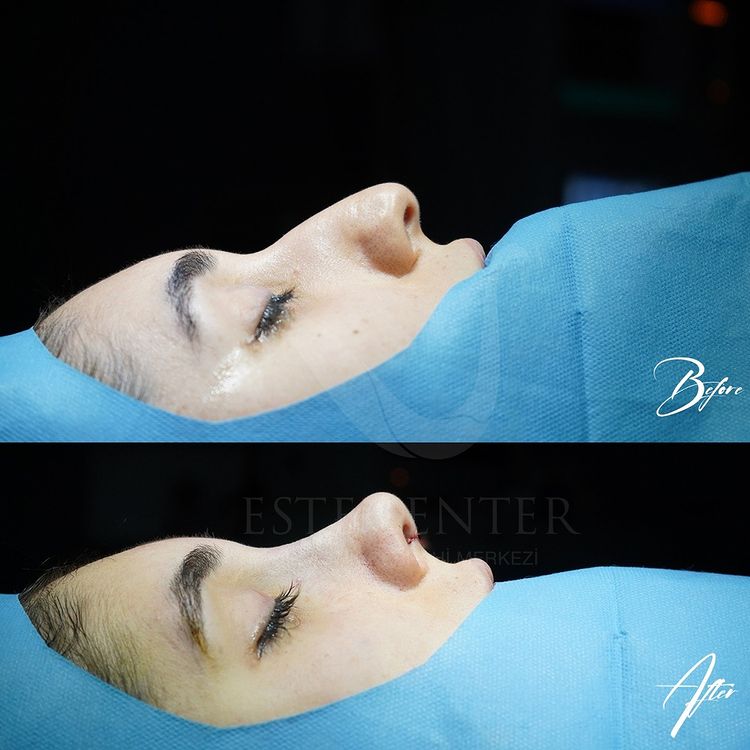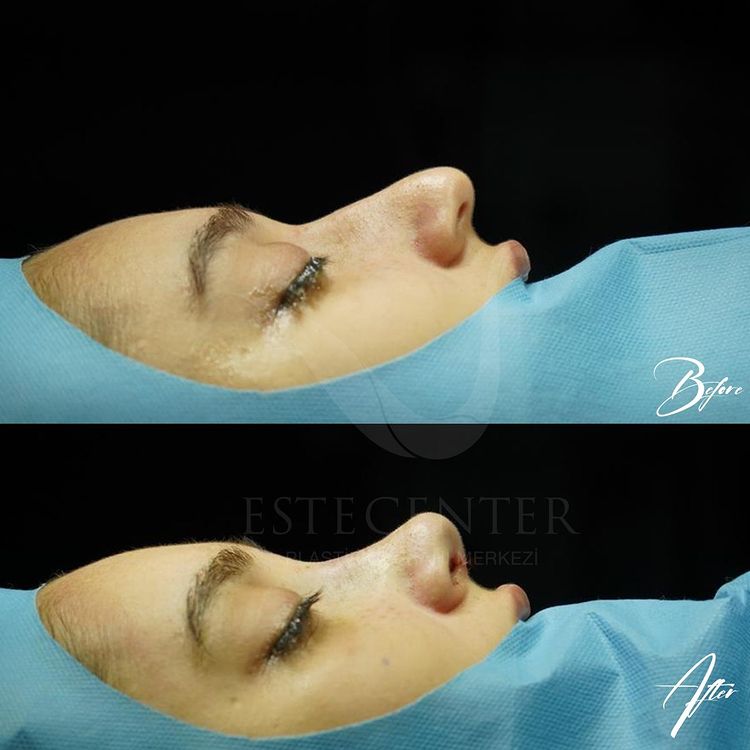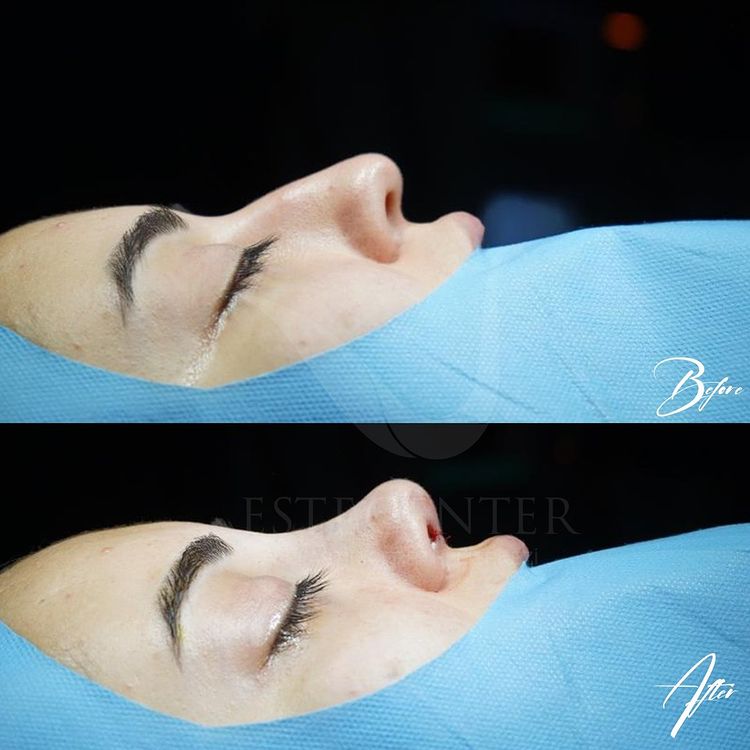Hair Transplantation
Hair Transplantation
Don’t Miss This Month’s Special Offers at Estecenter!
Contact Our Experts Today to Get Detailed Information and a Quote.
At our plastic surgery medical center located in Beşiktaş, Istanbul, we provide our patients from all over the world who have undergone breast aesthetics with the perfect appearance of their dreams, with our expert doctor staff and modern advanced technological devices!
- Latest Technology
- Expert team
- Specialist Doctor Staff
- 20 Years of Sectoral Experience
Before and After Hair Transplantation
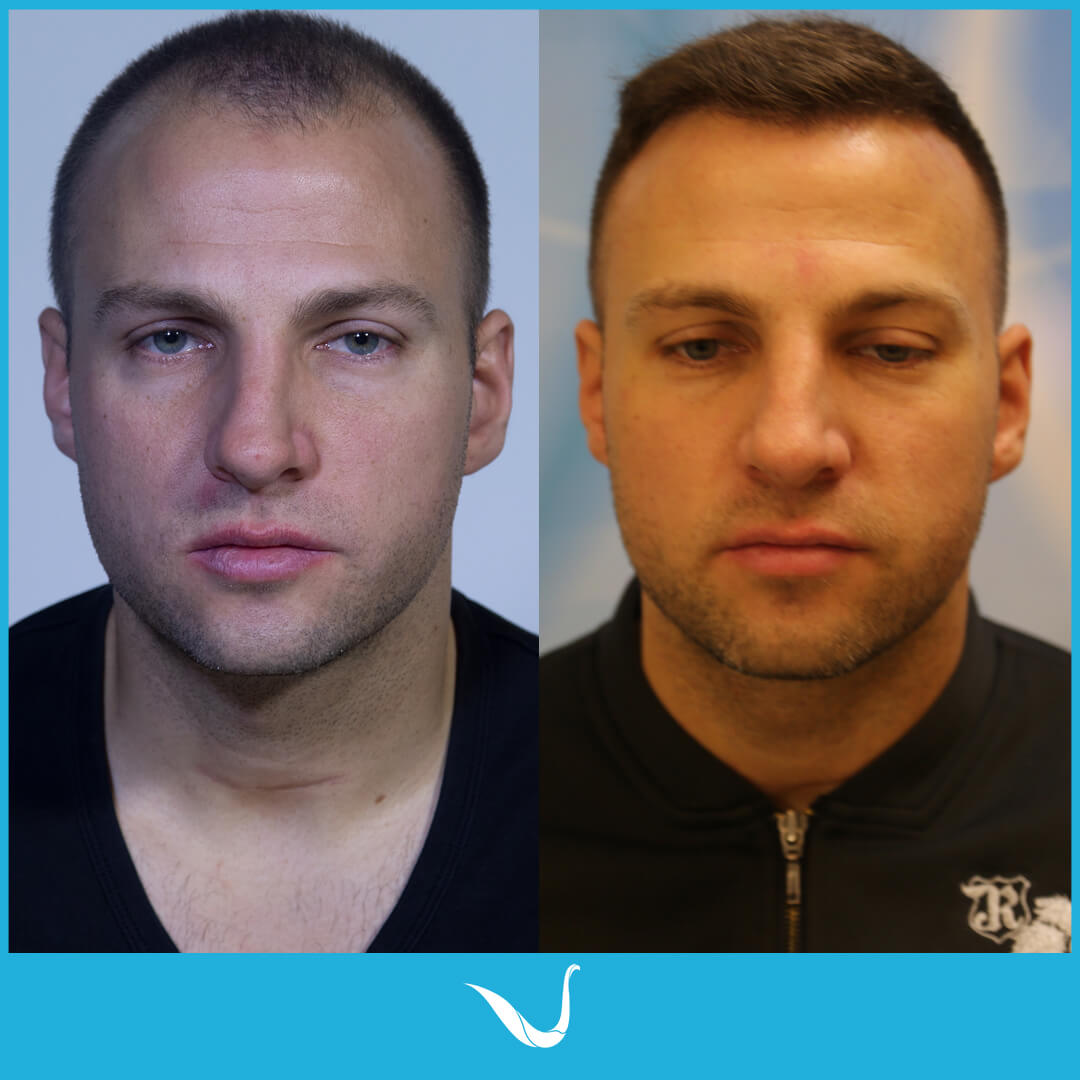


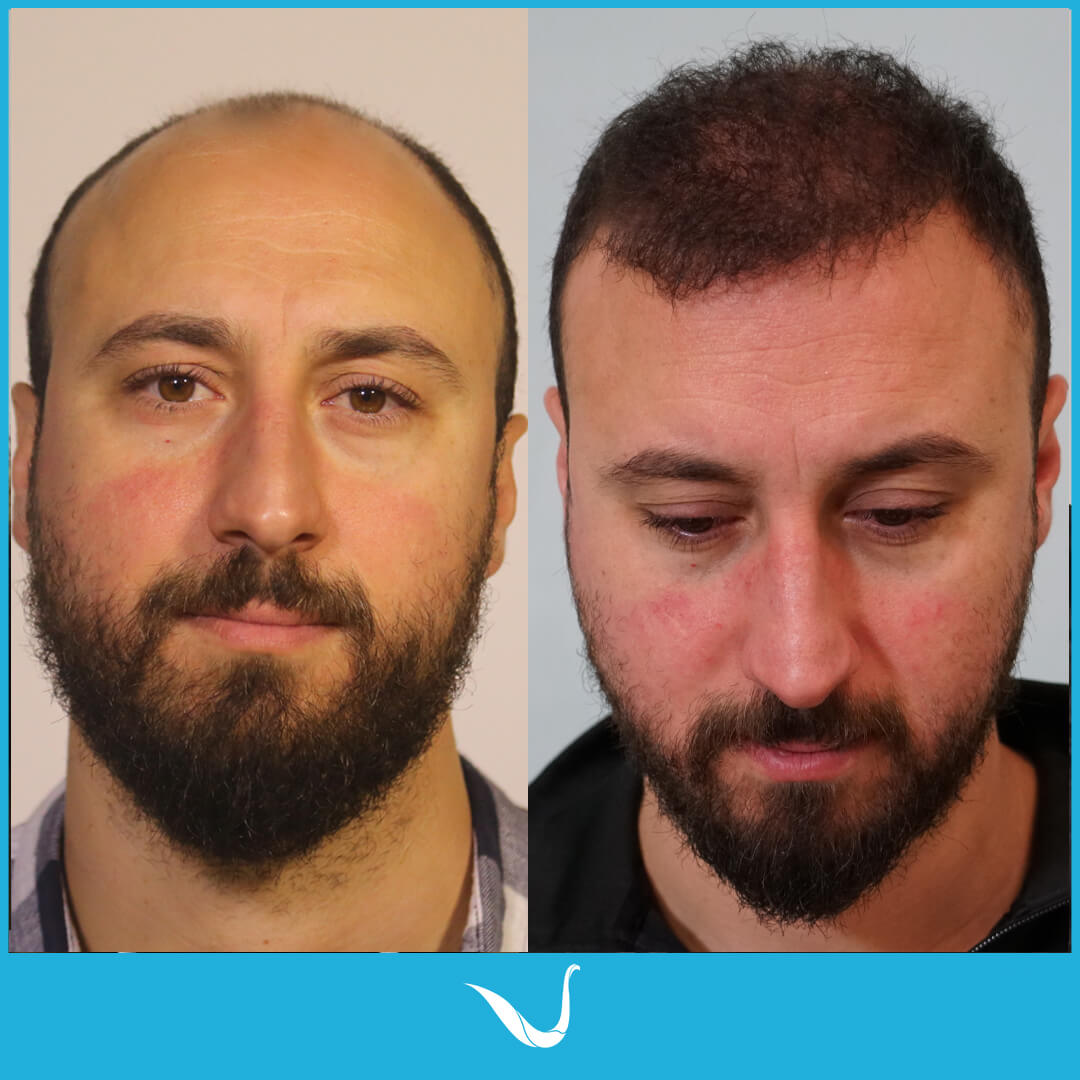

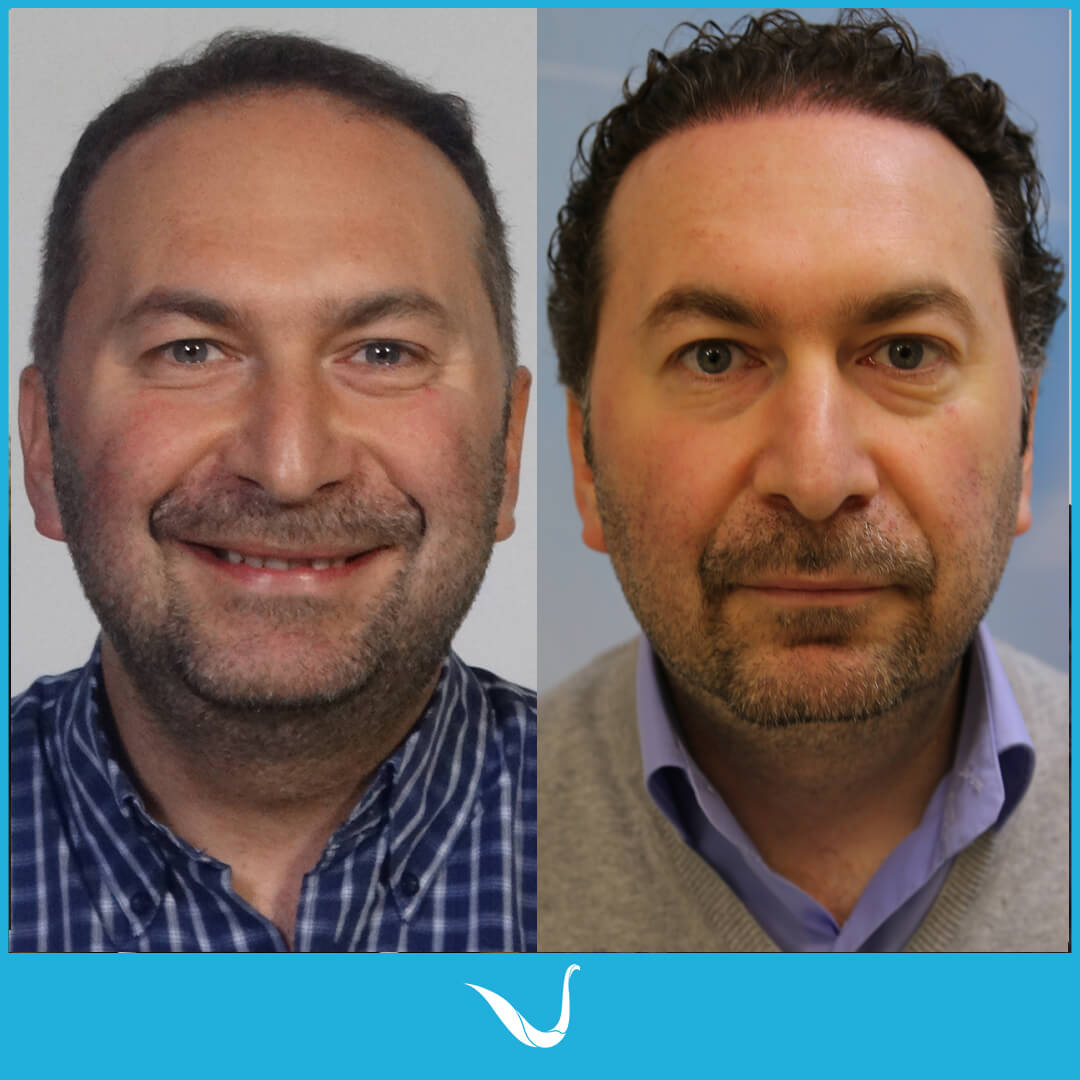
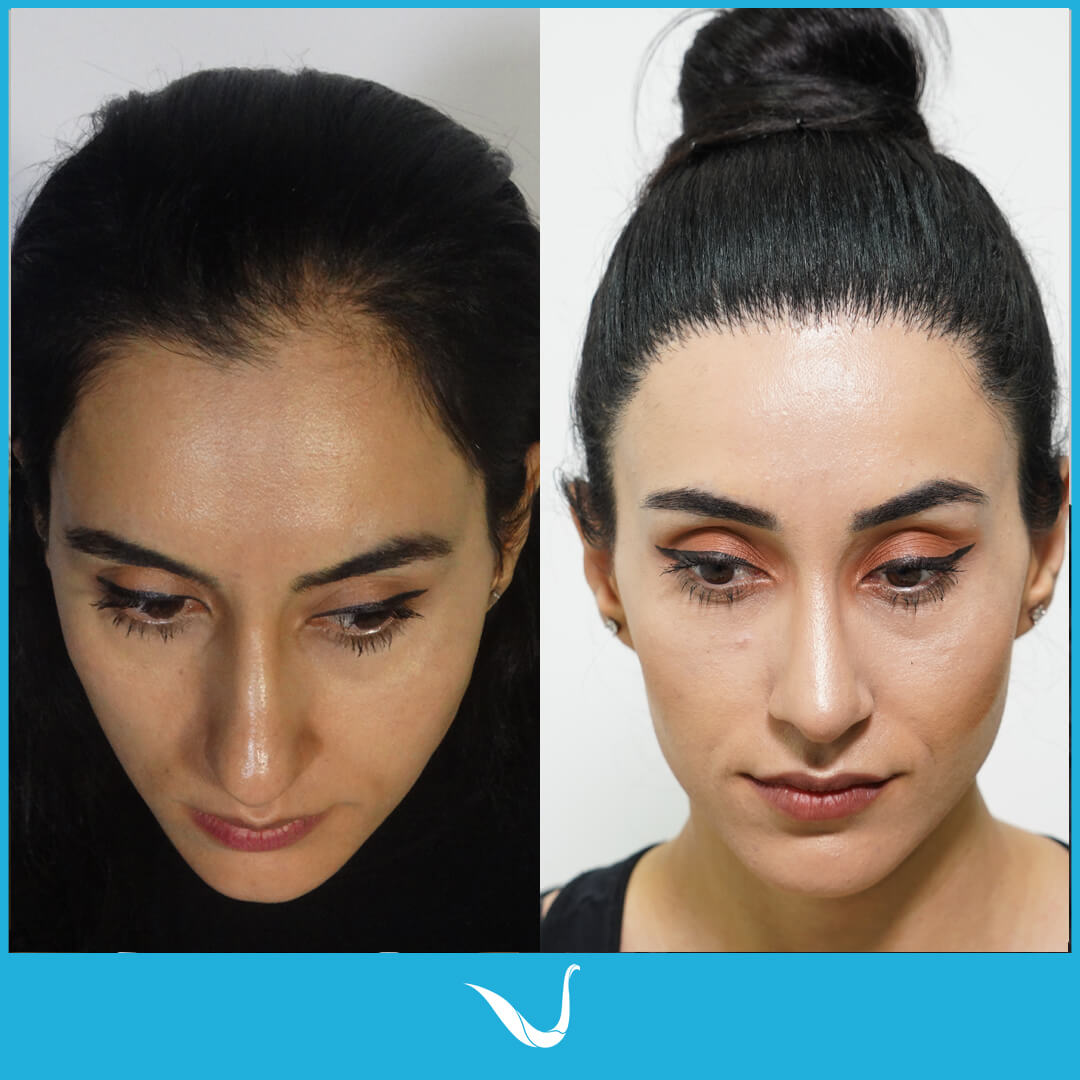

Hair transplantation is an aesthetic procedure that has become increasingly popular in recent years. It is used to combat problems such as hair loss and baldness among men and women. Hair transplantation is a procedure that involves taking hair follicles from another area and transplanting them to the bald area.
What is Hair Transplantation?
Hair transplantation can be an effective option to combat hair loss and baldness. This process involves taking hair follicles from one area and transplanting them to the bald area. However, this procedure is not suitable for everyone and the person’s health condition and hair quality should be taken into consideration.
It may not be possible for every individual suffering from hair loss to benefit from hair transplantation. Experts and doctors working at hair transplantation centers evaluate whether you are suitable for the procedure based on your hair loss type, metabolism and other details.
Hair Transplant Prices
Hair transplantation prices vary depending on many factors. Procedure fees may vary depending on the size of the area where hair transplantation will be performed, the number of hair follicles, the method chosen and the experience of the doctor who will perform the procedure. It may even differ between cities. Hair transplantation Istanbul price options may differ from the prices in Antalya, which is a smaller city.
The cost of hair transplantation and hair tightening may also vary depending on the quality of the clinic or hospital, the technology used, post-procedure care services and whether there are additional fees.
Hair Transplantation Techniques and Methods
The best hair transplantation techniques and methods are determined depending on the degree of hair loss, hair structure and number of hair follicles of the person to be transplanted. Which method will be used for hair transplantation varies depending on the person’s hair structure and loss status.
DHI Hair Transplantation
Frequently used FUE and DHI hair transplantation methods are similar. Hair follicles are directly taken and transplanted during the transplantation process. This allows the hair follicles to remain in the external environment for a shorter period of time and provides a faster healing process.
FUE Hair Transplantation
FUE hair transplantation method involves removing each hair follicle one by one. A small tool is used for this procedure and hair follicles are usually taken from the nape area. Then, the hair follicles are transplanted to the area with hair loss. It is generally preferred for regional hair transplantation . The FUE method is a less invasive method (does not require surgical intervention) and causes a less visible surgical scar.
FUT Hair Transplant
In the FUT hair transplantation method, a strip is cut from the scalp and smaller hair follicles are separated from this strip. Then, the hair follicles are transplanted to the area with hair loss. The FUT method allows faster removal and transplantation of hair follicles, but it may cause a more noticeable surgical scar.
How To Do Hair Transplantation?
Hair transplantation is usually performed under local anesthesia and takes approximately 4-8 hours. Before the hair transplantation procedure, a plan is prepared according to factors such as the degree of hair loss and hair structure.
Hair follicles are collected from the nape area behind the hair using the FUT, FUE or DHI method. The hair follicles are then prepared to be transplanted to the area with hair loss. Sometimes stem cell hair transplantation may also be preferred.
The area to be transplanted is anesthetized and prepared under local anesthesia. This process involves cleaning the area to be transplanted, shaving it and preparing it for the procedure. It varies depending on the patient’s condition and the technique the doctor wants to use.
Hair follicles are transplanted to the area with hair loss prepared for transplantation. Transplantation is done individually or in small groups in accordance with the hairline. If the DHI method is used, hair follicles are directly removed and transplanted.
After the hair transplantation process is completed, a bandage or a special coating can be applied to the scalp. Additionally, the healing process is supported by giving antibiotics and painkillers. There may be swelling and redness in the first few days after hair transplantation, but it usually goes away within a few days. It is important to talk to your doctor and clinic about the risks, benefits and costs of hair transplantation before the procedure.
Hair Transplantation Stages
Hair transplantation stages generally consist of 3 stages:
- Preparation before hair transplantation : At this stage, preparations are made before hair transplantation. The degree of the patient’s hair loss is determined, a hair transplantation plan is created and a detailed examination is performed before the procedure. Photos are taken before and after hair transplantation for comparison. Additionally, an appropriate anesthesia method is determined by taking into account factors such as the patient’s health condition and medication use.
- Collection of Hair Follicles : At this stage, hair follicles are collected from the nape area behind the hair. This procedure can be done with FUT, FUE or DHI methods. In FUE and DHI methods, hair follicles are removed one by one, while in the FUT method, hair follicles are obtained by cutting a strip from the scalp. The hair follicles are then prepared for the procedure.
- Hair Transplantation : At this stage, hair follicles are transplanted to the area with loss. Transplantation is done individually or in small groups in accordance with the hairline. If the DHI method is used, hair follicles are directly removed and transplanted. After the procedure, a bandage or a special coating is applied to the scalp and the patient is sent home.
These three stages constitute the outline of the hair transplantation process. However, since the degree of hair loss and hair structure of each patient is different, each hair transplantation procedure requires customized planning and implementation.
Hair Transplant Operation Duration
Hair transplantation operation duration may vary depending on the degree of hair loss and the number of hair follicles to be transplanted. Generally, hair transplantation can take between 4-8 hours.
When the FUE method is used, the operation time may be longer due to the hair follicles being removed one by one. Therefore, hair transplantation for up to 3,000 hair follicles can be performed in one session, while for more hair follicles, the procedure can be done in 2 sessions.
When the DHI method is used, the operation time may be shorter because the hair follicles are directly removed and transplanted. However, the disadvantage of this method is that hair follicles are obtained at a higher price.
The operation time also depends on the size of the area where the hair transplantation will be performed. Planting a smaller area can be completed in a shorter time, while planting a larger area requires a longer time.
The time required to complete the hair transplantation procedure is determined by the hair transplantation doctor after a detailed evaluation and knowledge of the person’s hair loss status.
Things to Consider Before and After Hair Transplantation
There are some points to consider before and after hair transplantation. Thanks to the precautions taken and correct maintenance, the process can be ensured to go smoothly and maximum efficiency can be achieved.
Before the procedure;
- It is recommended to stop using cigarettes, alcohol and similar products. You should stay away for a few days after the procedure.
- If the patient is using any medications, the doctor should be informed about these medications.
- Hair should be washed and the scalp should be cleaned.
- Blood thinners and aspirin should not be used for at least a week.
- The patient's blood sugar, blood pressure, heart rhythm and other health conditions should be checked.
- Those who do not pose a danger regarding the risks of surgery.
- People whose obesity problem is determined to be due to excess weight, not hormonal imbalance.
- After the procedure;
- The head should be kept elevated for several days, especially in the first 48 hours.
- Blood thinners and aspirin should not be used for at least a week.
- Exercising and heavy activities should be avoided for 2-3 weeks.
- You should also pay attention to washing procedures after hair transplantation. Activities such as washing hair and face or using towels should be avoided.
- It is important to regularly use the medications recommended by the doctor and have regular check-ups.
These suggestions can help patients have a faster and more successful hair transplant recovery process before and after the procedure.
Care Before and After Hair Transplantation
Care before and after hair transplantation is very important for a successful result. The instructions given by experts before the operation must be carefully followed. In this way, the transaction can be carried out with minimal risk.
After the operation, it is important to provide healing care such as washing, drying and medication use. After hair transplantation, sensitivities such as itching and crusting may occur. However, it is possible to prevent these situations with maintenance instructions. Instructions may vary depending on the person’s degree of hair loss and the size of the transplanted area.
Using Shampoo and Washing After Hair Transplantation
Using shampoo and washing after hair transplantation is very important to prevent damage to the hair follicles. Do not wash your hair for a few days after the operation. During this time, your scalp will begin to heal and your hair follicles will be fixed in place.
You can wash your hair after the time specified by your doctor. For this, it is important to use the shampoos recommended by your doctor. When washing, rub your hair gently and avoid using very hot water.
After washing your hair, do not dry your hair using a towel. Instead, gently absorb water with a towel and let it dry naturally. Avoid washing your hair too frequently for a few weeks after the operation.
When washing your hair, be careful not to apply too much pressure to the hair roots. Wash your hair by gently massaging. Avoid hair dyeing or hair styling for the period recommended by your doctor after the operation.
Nutrition Before and After Hair Transplantation
Proper nutrition is very important before and after hair transplantation. A healthy nutrition plan can help hair follicles heal better and grow new hair.
It may be beneficial to increase protein intake before and after hair transplantation. Vitamin C, known for its antioxidant properties, also protects hair follicles against free radicals. Biotin is an important vitamin for hair growth. Additionally, consuming iron-rich foods is beneficial for hair health.
Getting enough water in your body is also important for hair health. Water provides hydration to hair follicles and aids hair growth. Make sure to drink at least 8-10 glasses of water a day before and after hair transplantation.
Proper nutrition before and after hair transplantation can help hair follicles heal in a healthy way and new hair growth. By following the nutritional recommendations above, you can positively affect your hair transplantation results.
When to Get Hair Transplant Results?
Hair transplantation results vary depending on the person’s degree of hair loss, hair transplantation techniques and the natural growth process of the hair. Hair transplantation results are usually not evident immediately after the operation. Hair transplantation results occur in several stages.
In the first 2-4 weeks after the operation, most of the transplanted hair is shed. This is a normal process and does not cause any concern. During this period, the hair follicles are still located on the scalp and the hair is preparing to grow again.
Within 3-6 months after the operation, new hair begins to grow. However, these hairs may not be fully mature yet and have not grown significantly.
6-12 months after the operation, the transplanted hair begins to grow more clearly and its density increases. During this period, the hair usually settles completely after the first operation and a permanent result is achieved.
Process After Hair Transplantation
The process after hair transplantation includes several steps that should be taken into consideration in the post-operative period. In the first 24 hours after the operation, there is a bandage on the head and it is important to rest. It is recommended to keep the head upright. Additionally, any rubbing or scratching of the head is not recommended.
During the first week, washing the head is not recommended. You may need to continue using a special hat or bandage that your doctor prescribed specifically for you. After the bandage is removed, you can perform the first washing process of hair transplantation.
There may be swelling on the scalp in the second week. Hair transplantation is also a normal process. During this period, it is recommended to wash your head gently.
Most of the transplanted hair falls out within the first 3 months. This is a normal process and is not cause for concern. Additionally, it is important to follow a special hair care routine to support the natural growth of hair during this period.
In the first 6 months after the operation, new hair begins to grow. During this time, it is important to follow a special hair care routine to support natural hair growth. In the following 6 months, the transplanted hair settles completely and its density increases.
In the years after the operation, hair continues to grow naturally. The post-hair transplantation process, when followed carefully, is important to achieve a permanent and natural result.
Frequently Asked Questions About Hair Transplantation
There are many clinics and doctors specialized in hair transplantation in Istanbul. You can learn from specialist doctors when you can have hair transplantation or whether your hair type is suitable. You can also get information about Istanbul hair transplantation prices .
In general, procedures performed with modern hair transplantation techniques can have a success rate of over 90%. The success rate can be increased by applying appropriate care and treatment methods in the post-hair transplant period.
Diseases such as serious skin diseases that may affect the healing process after hair transplantation or hormonal imbalances that cause hair loss may also prevent hair transplantation. In addition, hair transplantation in women may be prevented by reasons such as pregnancy and breastfeeding, apart from diseases. Therefore, it is recommended to have a detailed health check and examination before hair transplantation.
Besides; Those who have a bare area in their hair or eyebrows after a burn; People who have previously undergone hair transplantation intervention but are not satisfied with it; People who are partially bald due to some diseases are suitable candidates for hair transplantation. It is not necessary to wait until you are bald before applying for a hair transplant operation.
However, there is no age restriction for this operation. Anyone, man or woman, can have a hair transplant if there are enough hair follicles in the donor area.
In order to understand the transplantation result, you need to consider the area where the drawing is made as a result of the decision you made with your doctor. The number of grafts taken, the quality of the grafts, the size of the transplanted area, your genetic structure, the medications you use and even the diseases you have will affect the result you get from the hair transplantation procedure.
The importance of the right hospital or hair transplantation center is important for the results of the hair transplantation procedure. The professionalism of your doctor and the experience of his team are extremely important for the correct placement of high-quality grafts.
In addition to the physical characteristics that differ from person to person, the characteristic features of the hair also affect the success of hair transplantation. The characteristic features of the hair are the hair color, the thickness of the hair strand and the shape of the hair strand. The direction of your hair growth and the quality of your hair follicles also affect the density of the newly transplanted hair and the result of hair transplantation.
The number of hair strands in each hair follicle is among the factors affecting the results of hair transplantation. The grafts taken from behind the ear and the nape of the neck, which will not fall out, should be examined and after making sure that they are of good quality, a decision should be made to have the transplantation done.
Meet Our Doctors
Call Me Back
Table of ContentsToggle Table of ContentToggle
- Hair Transplantation
- Hair Transplantation
- Before and After Hair Transplantation
- What is Hair Transplantation?
- Hair Transplant Prices
- Hair Transplantation Techniques and Methods
- How To Do Hair Transplantation?
- Hair Transplant Operation Duration
- Things to Consider Before and After Hair Transplantation
- Care Before and After Hair Transplantation
- When to Get Hair Transplant Results?
- Process After Hair Transplantation
Emergency Cases
Please feel welcome to contact our friendly reception staff with any general or medical enquiry call us.

